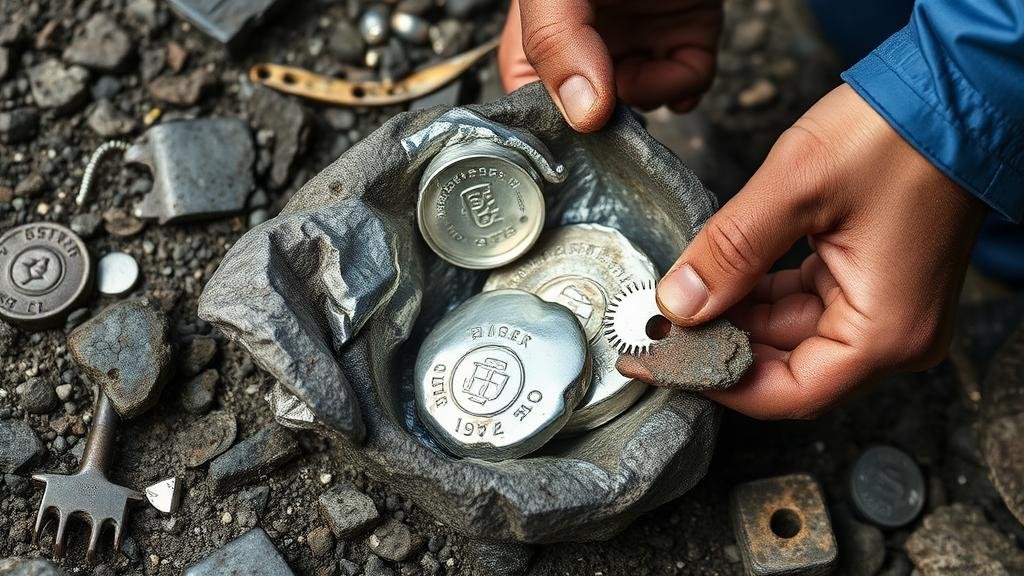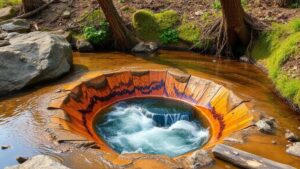Recovering Silver From Small Mine Dumps Using Hand Tools
Recovering Silver From Small Mine Dumps Using Hand Tools
The recovery of silver from small mine dumps represents both a sustainable approach to resource utilization and a potential economic benefit for individuals and communities. As precious metals are in high demand, understanding the process and techniques involved in silver recovery can significantly enhance the economic viability of previously abandoned mining sites.
Understanding Mine Dumps
Mine dumps, also known as tailings, are the residual materials left after the extraction of ore. They often contain a mixture of valuable metals, including silver. composition of mine dumps can vary significantly based on the mining process employed, the type of ore being mined, and the geographical location.
According to the U.S. Geological Survey, mine tailings can contain up to 2-10 times the concentration of certain metals compared to natural deposits, making them a valuable target for recovery efforts.
Tools and Techniques for Silver Recovery
Recovering silver from mine dumps can be effectively achieved using basic hand tools. Here is a list of essential tools and techniques applicable to this process:
- Panning: This involves using a shallow pan to separate lighter materials from heavier ones, taking advantage of silvers higher density.
- Shovels and Pickaxes: Basic digging tools enable the collection of raw material from mine dumps.
- Sluice Boxes: These devices help to concentrate valuable minerals through water flow, trapping heavier ore while washing away lighter material.
Processes of Silver Recovery
The recovery process typically involves several steps, which can be summarized as follows:
- Sampling: The first step involves collecting samples from various locations in the mine dump to determine the concentration of silver.
- Crushing and Grinding: The gathered samples need to be broken down into smaller particles to enhance the efficiency of the recovery process.
- Gravity Separation: Utilizing techniques such as panning or sluicing to separate heavier silver particles from waste material.
- Refinement: Further purification may be necessary to obtain higher purity silver, which can involve methods such as smelting, though this may require additional equipment.
Real-World Applications
In various regions, individuals and small mining companies have successfully implemented these recovery techniques. For example, in the Appalachian region of the United States, small-scale mining initiatives have seen a resurgence, utilizing hand tools to extract silver from historical mine dumps. These efforts have not only provided a source of income but also contributed to local economies and sustainability by rehabilitating land and properly managing waste materials.
Potential Challenges and Solutions
While recovering silver from mine dumps can be rewarding, several challenges may arise:
- Environmental Impact: Disturbing mine dumps can pose risks to the surrounding ecosystem. Conducting recovery with minimal disturbance and using non-toxic methods can mitigate these effects.
- Legal Regulations: Local regulations regarding mining activities must be adhered to. It is essential to obtain relevant permits and ensure compliance with safety and environmental laws.
Actionable Takeaways
For individuals interested in recovering silver from small mine dumps, the following steps are advisable:
- Conduct thorough research to understand local geology and assess mine dump characteristics.
- Gather the necessary hand tools and prepare for a safe recovery process.
- Engage with the local community or research institutions to share knowledge and practices.
- Stay informed on legal requirements associated with mining activities in your region.
To wrap up, recovering silver from small mine dumps using hand tools is an accessible and economically viable solution for individuals and small communities. By understanding the process, utilizing proper techniques, and being mindful of environmental and legal considerations, silver recovery can serve as a valuable local resource.



